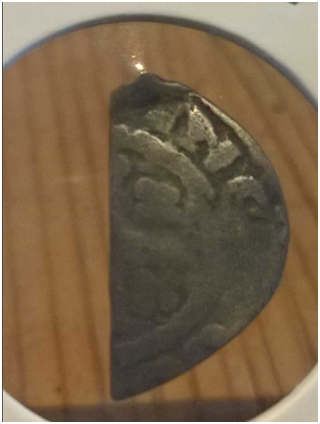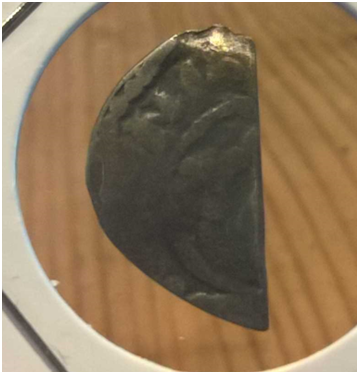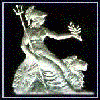Leaderboard
Popular Content
Showing content with the highest reputation on 08/20/2018 in all areas
-
3 points
-
2 points
-
1 point
-
Interestingly, here's a topic here on Predecimal from 2013 where someone called Peckris (who he? ) questions whether the 1926ME should be referred to as a "mule"! The rest of you are more consistent and say it shouldn't ... http://www.predecimal.com/forum/topic/7920-is-the-1926me-penny-a-mule/1 point
-
1 point
-
I was talking about the unique 1926ME paired with the 1927 reverse, what were you referring to? That one CANNOT be called a mule as it obvious that it was the intended design as we see the following year with the 1927. No-one (at present) knows when the unique variant was struck, i.e. whether before, during or after ME dies were used for the end of the 1926 penny run, but by any definition of the term 'mule', it isn't. I was theorising, that's true, but I felt it was the best explanation (so far) for the several questions posed by the mere existence of the 1926 penny. As for experimental dies, are there any obverse dies that weren't in fact used for currency runs? Even the short lived 'recessed ear' of 1915 and 1916 was used on several million pennies (though it would be fascinating to know why that was abandoned, as that particular experiment resulted in fully struck up Britannia reverses which the normal obverse did not). The only experimental die I know of for sure, is the 1922 so-called "reverse of 1927" which only exists for a few specimens and was never used again. Yes, "pattern" seems more appropriate than "mule". We'll have to leave the normal 1926ME as a "grey area" and agree to differ! Though I will say that 1902 HT and LT is less of a controversy as that design changed partway through the run, and clearly 1902 LT was the first design as per 1895-1901, which then got changed to HT as per 1902-1926 for reasons we may never know, i.e. neither 1902 is a mule. My main case for the 1926ME is that (theoretically) the ME dies were grabbed to finish the run but they had enough reverses to do the job. In other words, the pairing was "deliberate" but not "intended" by which I mean that if normal circumstances prevailed that particular pairing would not have been used.1 point
-
It would be difficult to find a dealer that is as knowledgeable and as much a gentleman as he..... I believe that I said it before, especially as I collect copper and bronze, that if I could only have 1 dealer to work with, I would pick Michael Gouby. ....1 point
-
I agree with Non. "Bright" usually implies dipping or cleaning. Dealers tend to use terms like "lustrous", "brilliant", "retaining some original brilliance", "just beginning to tone" etc otherwise. But I also don't think you will find any issues in this case. On a separate issue, I really don't think experienced dealers should use ? in grading. In this case EF?/EF just sugars the pill that the observe is not quite EF. aEF would be more straight forward.1 point
-
That's fair enough. I can only talk about my experience but in the past 'bright' has meant dipped or cleaned in some way. I remember when I joined this forums I was advised as such. Michael is a very reputable dealer so I don't envisage you having any issues.1 point
-
Yes. Could have been worse. Thanks Chris. Was tempted to chuck in the coin-collecting towel earlier, but I'm enjoying the research too much. The coins will be like small symbols/reminders of what I've learnt, as well as things of beauty in their own right. Great pathway into corners of history I've not explored or even considered.1 point
-
Could have been worse, I suppose. And MAYBE $150 will prove worthwhile in the long run for the experience gained? We've all been there!1 point
-
I've just cleared up this issue with Michael. He said that "bright" does not mean dipped for the coins he sells and that he would mention any evidence of cleaning or dipping when describing the coin. Given his reputation and demeanor in my dealings with him I believe him entirely. Made final payment for a 1787 shilling and sixpence and am looking forward to the arrival of same. A quote from his email: As I always say to every collector “I will always give you a full refund for the coin if you are unhappy for any reason and wish to return it” ! Needless to say I'll be buying from him again as the experience has been far more pleasant than the baptism of fire I got through eBay.1 point
-
1 point
-
Bear in mind that the mint produced coins to satisfy the demand (orders) from the banking system and no one else. The clearing banks therefore hold the key to the issues for this or any other year. There was no apparent shortage of farthings or halfpennies, both of which were issued in plentiful numbers, so assuming there is a query surrounding the 1926 issues, what used pennies to the exclusion of the other base denominations? One possibility is that there may have been localised shortages due to support for the strike. This would be more likely to affect single industry towns where strike action would disproportionately affect the local economy. Cities would be protected to some extent by their diversity. Generally, less money would be spent in pubs or shops, and less subsequently paid into bank accounts. The strike ensured that wages were stopped for many families, restricting the disbursement of change. Savings, however modest, would be drawn down in the absence of any other sources of funding, again putting a strain of bank stocks. At the end of the day, a bank will ascertain stock levels of each denomination and order supplies accordingly. If a fixed amount of pennies was the accepted level to hold, then it would take little disruption to the local economy to change demand. Without a fixed end date to the strike, it would be prudent to ensure future liquidity by local banks asking for and holding higher stocks to counteract any supply side problems, or maybe the Government leaning on them to ensure that the economy was adequately provided for and so appear unimpaired by the strike. I think the economy in 1926 provides the solution to the variety of types issued and the various die combinations, with the General Strike likely responsible for a temporary shortage of pennies, leading to the first coinage dies being used with the introduction of the ME dies a response to increased demand.1 point
-
Coins went for: 1838 gold threepence 16.8k USD plus 20% = 20.15k 1927 gold half crown 72k USD plus 20%!! juice = 87k Broke my heart to not be able to compete, but WAAAAY too Rich!1 point








